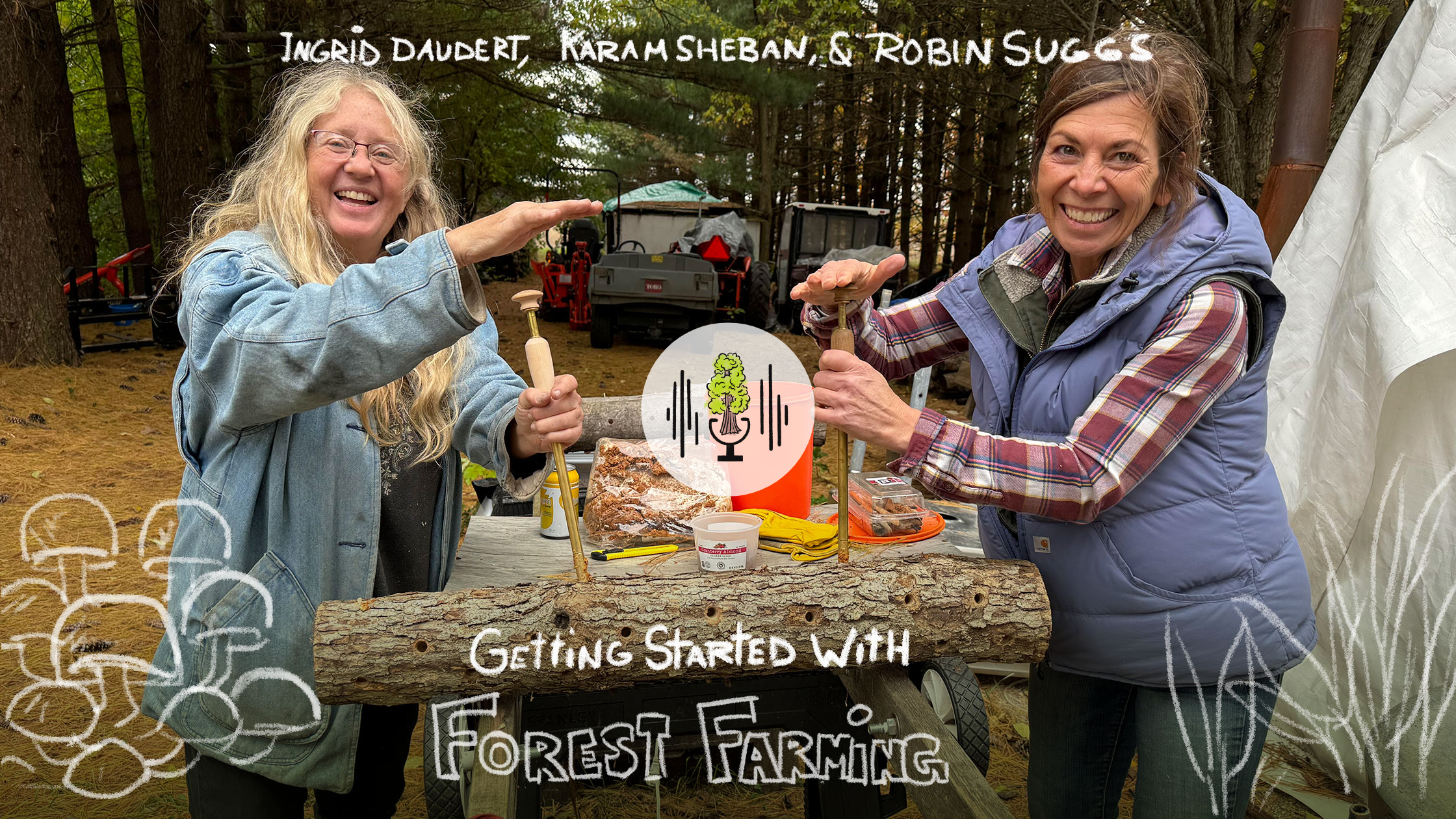Our latest podcast episode features a recorded session from the 2023 Perennial Farm Gathering called “Everything You Wanted to Know About Forest Farming (But Didn’t Know to Ask)”. And that pretty much sums it up!
Robin Suggs starts off the session with a brief overview of the types of non-timber forest products (NTFPs) typically produced in a forest farming setting, and discusses site considerations, production methods, and market opportunities relevant to the forest farming of NTFPs for profit. Ingrid Daudert of Misty Dawn Farm explains the challenges and opportunities of mushroom farming and shares information about the Shiitake Grower’s Association. Karam Sheban shares his work establishing the Northeast Forest Farmers Coalition, which brings together forest farming research, education, and community in the northeastern US. The session ends with the three panelists responding to questions from the audience.
Transcript has been edited for brevity and clarity.
Karam Sheban: I recently learned that the name “Chicago” comes from an indigenous word for ramps. I thought that was pretty cool. So yeah, in the Great Lakes region, as in the northeast region, ramps are really important. One of the difficult aspects of forest farming, and especially for folks who are starting kind of from scratch, is that from a sustainability perspective, it’s great to start with seed. That means you don’t have to remove plant material from an existing location, which a lot of people do get started. Either they have plants on their property in the first place, and that’s great – but if you don’t, you know, you’re going to buy ramp bulbs from somewhere else that they’ve been harvested. Seeds represent a net increase in the overall availability of these plants. Bulbs have to come from somewhere else. And right now we’re just in a tough place with the supply chain where it can be hard to know if the root material that you’re getting for these forest botanicals was sustainably supplied.
Ingrid Daudert: Yeah. A great part about seed versus rootstock and things like that is being able to get in there and do a large area and just spread the seed. I like to think of it sort of like spreading fairy dust. Walking through my woods and just spreading it and seeing where it will actually do well, you know, because of different soil types and different microclimates and things like that. And if you’re not sure what you have and what your property is like, it’s one way to do a little test plot by spreading it in a lot of different areas.
Robin Suggs: Yeah. And in Appalachia, where so many have been harvested through the years, a lot of folks are only harvesting the leaves, and leaving the bulbs in the ground. Some folks will say that the Native Americans of the region have always done that. There is a market for the leaves, especially dried leaves. But whatever plant part that you’re marketing, you need to check with your customer to make sure that’s what they’re looking for, because if someone’s looking for ramps and you come with ramp leaves and not the whole plant, you may both leave very disappointed. But folks are getting creative. I’ve seen ramp cornmeal mixes for ramp cornbread. The sky’s the limit.
For information on agroforestry and its environmental impacts, visit climate change to learn more.
Links
PFG recordings: https://www.savannainstitute.org/pfg
Misty Dawn Farm: https://mistydawnfarm.com
Shiitake Growers Association: https://shiigaw.org
Appalachian Sustainable Development: https://www.asdevelop.org
Northeast Forest Farmers Coalition: https://www.northeastforestfarmers.org

